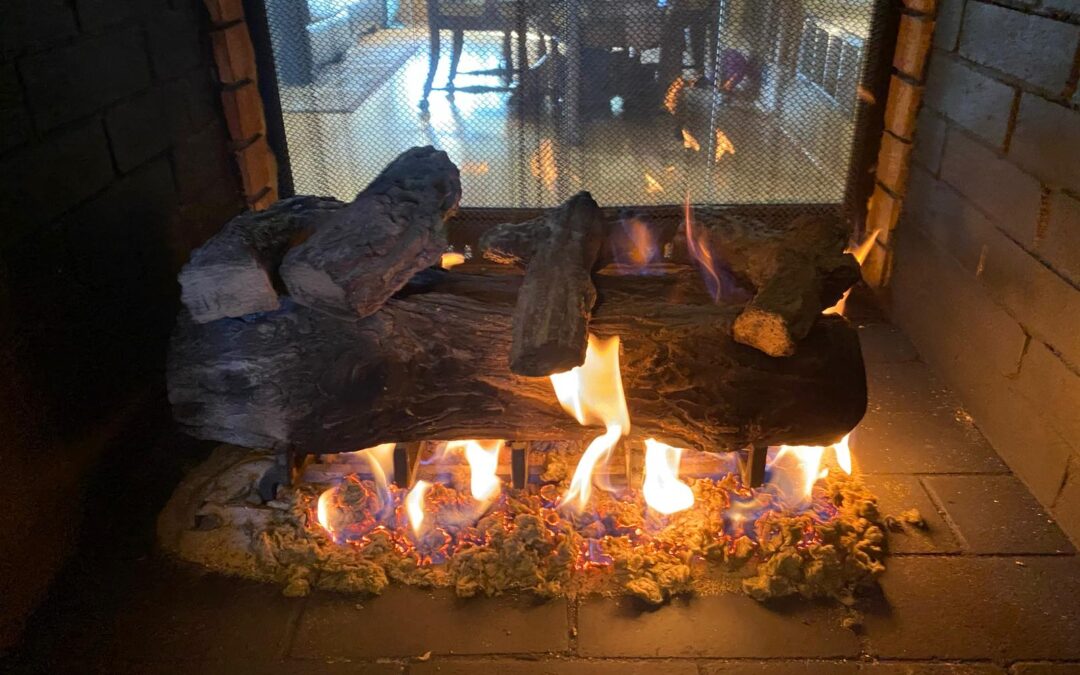Fireplaces provide warmth, ambiance, and style to any home. Choosing between a gas or wood-burning fireplace often depends on personal preferences, but understanding their maintenance and cleaning requirements is crucial for long-term functionality and safety. Here’s a deeper look at the maintenance routines and cleaning tips for both fireplace types to help you make an informed decision.
Maintenance for Gas Fireplaces: Simplicity Meets Consistency
Gas fireplaces are celebrated for their convenience and consistent performance. However, they aren’t entirely maintenance-free and require some attention to operate safely and efficiently.
Gas fireplaces need an annual inspection from a certified technician. This includes checking gas lines, pilot lights, and the venting system for leaks or blockages. The glass doors, which can collect soot or condensation residue, should also be cleaned with specialized products. Additionally, homeowners should inspect the ceramic logs periodically, ensuring they are properly positioned and free from debris to maintain even flame distribution.
One of the greatest advantages of gas fireplaces is their ease of cleaning. With no ash or creosote buildup, they require less frequent care compared to wood-burning alternatives. Regularly vacuuming around the burners and inspecting the vent ensures a hassle-free heating experience.
Maintenance for Wood-Burning Fireplaces: A Traditional Yet Labor-Intensive Choice
Wood-burning fireplaces deliver a classic charm and cozy atmosphere but require more extensive maintenance to remain safe and effective.
The primary focus for wood-burning fireplaces is chimney upkeep. Creosote, a byproduct of burning wood, can accumulate in the chimney, creating a potential fire hazard. Scheduling a professional chimney sweep annually is non-negotiable. The firebox itself should also be cleaned regularly, removing soot and ashes after every few uses. Ashes should be stored in a metal container with a secure lid to prevent accidental fires.
Beyond cleaning, inspecting the firebox for damage is critical. Cracks or deteriorating mortar should be repaired promptly to prevent structural issues. The damper system should also be checked to ensure it opens and closes smoothly, reducing heat loss when the fireplace is not in use.
Comparing Cleaning Requirements
Both gas and wood-burning fireplaces demand regular cleaning, but the methods and frequency differ significantly.
- Gas Fireplaces: Cleaning focuses on internal components, such as burners and glass panels. This process is simpler and less messy, requiring little more than a soft cloth and vacuum.
- Wood-Burning Fireplaces: These require cleaning after every few uses to remove ashes and soot. Tools like brushes, vacuums, and soot removers are essential for maintaining cleanliness. Creosote buildup demands monthly attention during high-use periods.
Regardless of the type, always ensure the surrounding area is free of flammable materials, and regularly test carbon monoxide detectors for added safety.
Tips for Safe and Efficient Fireplace Use
To ensure both types of fireplaces operate efficiently and safely, keep these universal tips in mind:
- Invest in Annual Inspections: Whether gas or wood, professional inspections can identify issues before they become hazardous.
- Use Proper Tools: Brushes, vacuums, and specialized cleaners can make maintenance simpler and more effective.
- Monitor Ventilation: Proper airflow is vital to avoid buildup of harmful gases like carbon monoxide.
- Upgrade Accessories: Heat-resistant glass doors and quality fireplace grates enhance performance and safety.
Choosing the Right Fireplace for Your Lifestyle
While gas fireplaces offer minimal cleaning and consistent functionality, wood-burning fireplaces provide a timeless aesthetic that appeals to traditionalists. The choice depends on your willingness to commit to the level of maintenance required. Understanding these differences ensures your fireplace serves as a safe, efficient, and beautiful focal point in your home.

